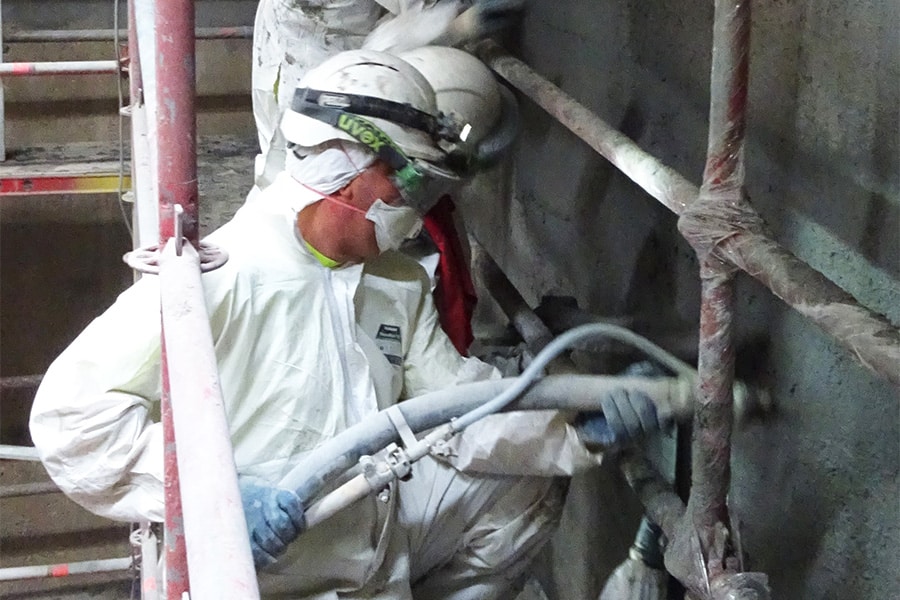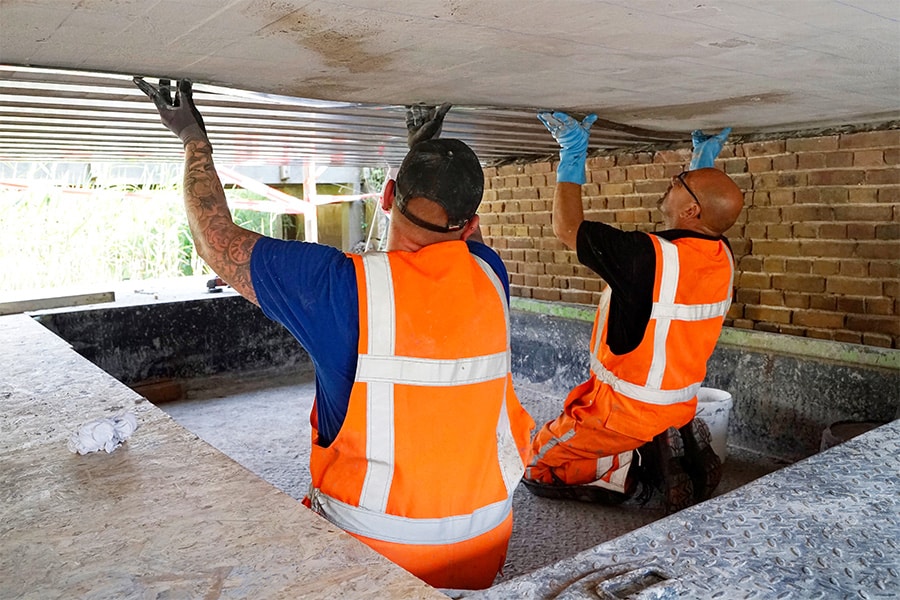
Beware of geopolymers. Sustainable and circular concrete pavements
Infrastructure is constantly looking for new ways to reduce the carbon footprint of projects. After all, projects are awarded on a favorable MKI value and low CO2 emissions. In road construction, one then quickly looks for ways to further reduce the CO2 emissions of materials such as asphalt and concrete, and thus cement in particular. This leads to pavement structures in elephant grass concrete, fiber-reinforced concrete or geopolymer concrete. In particular, Wim Kramer, concrete knowledge carrier with 35 years of experience in the cement and concrete industry, is quite skeptical about the contribution of geopolymer concrete to an environmentally friendly and sustainable future.
For decades, the Netherlands has been a global leader in the use of low-CO2 cements. "The current CO2 savings in cement used are mainly achieved through a high proportion of blast-furnace cement and the use of fly ash in Portland fly ash cement as alternative raw materials and through transport by water," says Kramer. "But the concrete and cement industry is not sitting still either. For example, extensive research and pilot projects are being conducted with low-CO2 cement and thus lower-CO2 concrete. In addition, people are busily experimenting with the reuse of materials. Today, a smart crusher is even able to reduce concrete completely to cement grain level, a fraction that can be used again in the cement industry."

Fiber reinforced concrete
Clients are placing increasing demands on infrastructure projects with regard to sustainability and circularity. "Road builders are busy working with the concrete industry to come up with smart mixtures for a favorable MKI value and low CO2 emissions of the concrete pavements, which will help them get the work awarded," Kramer says. "A good example is the use of fiber-reinforced concrete. With that you can construct thinner. It is already used in practice with some regularity with White Topping for life-extending maintenance of worn asphalt bike paths, for example. With a thin overlay of concrete, provided with a constructive fiber in the mixture, which also makes use of the residual strength of the asphalt, the lifespan is considerably extended. Moreover, you use less material, there is less supply and thus you save even more on CO2 emissions compared to an entirely new standard construction."

A bike lane is therefore the calibrated testing ground for new initiatives, according to Kramer. "Not that much can go wrong. And if a new initiative does not turn out well in the end, it is at most a matter of replacing or overlaying the surface layer, without drastic consequences or much inconvenience for the road user. In this way, nice and positive experiences have already been gained with fiber-reinforced concrete."

Geopolymer concrete
Within the search to reduce the CO2 profile of concrete, the focus is also on binders with a low CO2 profile. "Geopolymer concrete is increasingly seen in the Netherlands as the solution to significantly reduce the CO2 profile of concrete," experiences Kramer. Still, he has his doubts about this. "For example, a bicycle path in Overijssel, which had been constructed with red-colored geopolymer concrete, soon showed the necessary surface damage due to de-icing salts and frost. Constructively this is usually not an acute problem, but the lifespan of the construction will not be met and the comfort for the cyclist will deteriorate rapidly. Not to mention the aesthetic aspect...." With this knowledge, it is not for nothing that concrete bricks and tiles made of geopolymer concrete are provided with a cementitious top layer during production. "This makes the surface more resistant to frost and de-icing salts," Kramer states. "In the case of the bicycle path in Overijssel, the deterioration was so great that several slabs have already been replaced. And last year in Utrecht, too, a bicycle path with colored geopolymer concrete was completely replaced with regular concrete shortly after construction because of structural deterioration. So you don't gain any CO2 benefit from that."

Broader scope
But there is another aspect to geopolymer concrete that is often underexposed. Kramer: "In geopolymer concrete, the cement is replaced by an alkaline activated binder. In Northwestern Europe, blast furnace slag or pulverized coal fly ash is commonly used for this purpose, the availability of which is rapidly diminishing. Coal-fired power plants are being closed down at an accelerated rate, Tata Steel is under social pressure and has already announced its intention to switch to a different steel process, which will release far less (suitable) slag. And to think that the cement industry already uses almost all available slag and fly ash in its cements. Geopolymers can certainly contribute to CO2 reduction, provided they do not use raw materials already used by the cement and concrete industry and ensure that we in the Netherlands are already leaders in the use of low CO2 cements and concrete mortar. From a broader scope you are just shifting raw materials and then you lose all the CO2 benefit. So geopolymers can only contribute to reducing CO2 emissions if raw materials are used that we do not already use within the cement and concrete industry. This can be artificially produced slag, but also other secondary material streams, although the volumes of these are usually limited."
Acid resistance
We should not have the illusion that geopolymer concrete is going to replace all concrete, Kramer resumes. "And certainly not in road infrastructure. Trials with prefabricated interior walls for houses in geopolymer concrete, on the other hand, do show good results. You don't suffer from external degradation then. It also appears to be suitable for the production of sewer pipes because of its specific properties such as acid resistance, but all in all the scale is very limited. Clearly, due to the limited availability of raw materials, the production of geopolymer concrete in its current form cannot be scaled up to the point where it can replace a significant portion of regular concrete based on regular cement. For most applications in (road) infrastructure, the properties of geopolymer concrete are also inferior to those of regular concrete. Moreover, geopolymer concrete cannot yet be considered circular. For example, it cannot be used together with regular concrete aggregate as a secondary aggregate. It is good to use waste streams that are not used in cement and concrete, such as copper slag, for geopolymer concrete, when this application provides the most environmental benefit."

Low CO2 cement
It can be concluded that the contribution of geopolymer concrete to the further sustainability of concrete pavements is very limited, especially when applied to in-situ (road) infrastructure, says Kramer. So what is the alternative? "The solution soon lies in applying low-CO2 cement. For example, cement plants in Norway are investing heavily in installations that capture all CO2 during production. In this way, low-CO2 cement will be produced within a few years. And cement, as you know, has the largest CO2 share in concrete. If you can reduce that substantially, we will make really big steps. Certainly in combination with a smart crusher, where the cement fraction can also be reused."




